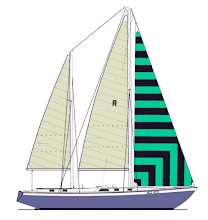The Ex-Meridian can be done by formula for improved precision over Bowditch vol.2 tables #29 and #30. (current edition table #24)
Formula :
(a) = 1.9635 x COS Latitude x COS Declination / SIN (Lat. ± Dec.*)
*RULES (+) if Lat. & Dec. are contrary in name. (-) if Lat. & Dec. are the same name.
Ex-Meridian Correction in minutes of arc to be added to Sun (Ho) near LAN (upper transit) :
Ex.Correction' = (a)( Time from LAN in minutes and tenths)^2 / 60
or
Ex.Correction' = (.267)(a)( Meridian Angle in degrees and tenths)^2
Example:
Lat.34°N Dec.20°S (Sun observed 20 minutes 30 seconds before LAN)
(a) = 1.9635(Cos 34)(Cos 20)/Sin (54) = 1.89
Ex.Corr.' = (1.89)(20.5)(20.5)/60 = 13.24' added to (Ho)
or
Ex.Corr.' = (.267)(1.89)(5.125)(5.125) = 13.24' added to (Ho) *
The corrected (Ho) is then reduced as a normal LAN to get the Latitude at the time of observation.
*Try a formula variant that uses meridian angle vs. time
.267 (a)(Meridian Angle)^2 = Ex.Correction'
file:///Users/greg/Desktop/factors.html













